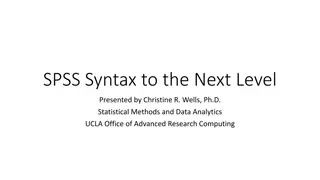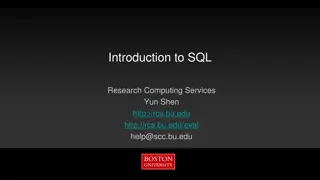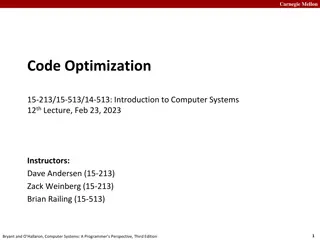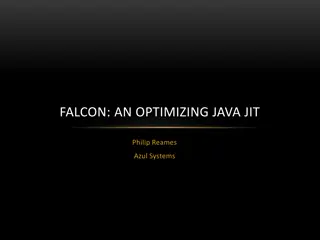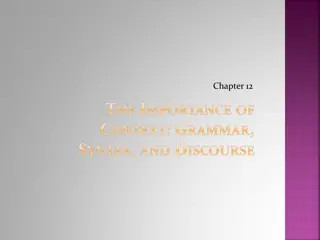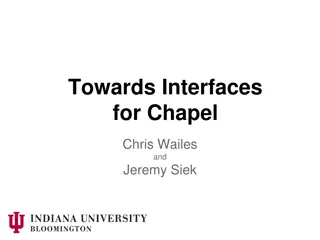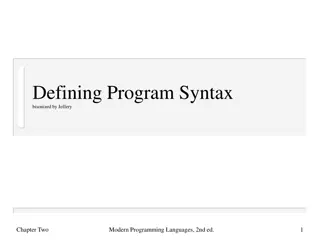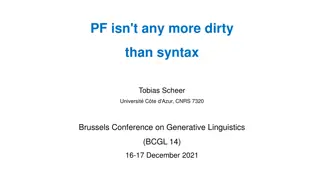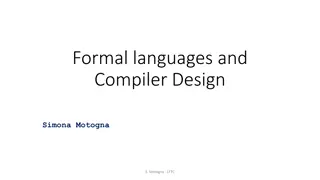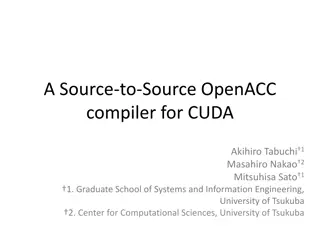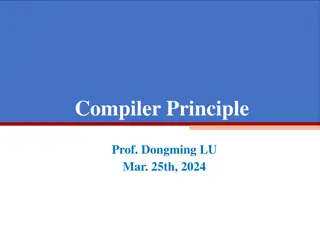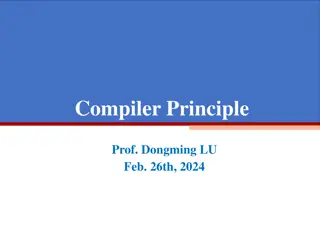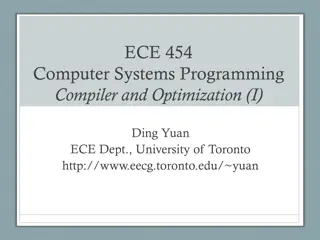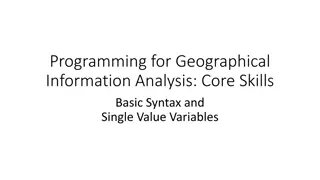Compiler Structure and Syntax Analysis
This content delves into the intricate workings of compilers, focusing on abstract syntax trees (AST) analysis and the structure of a compiler. It covers topics such as source code parsing, control flow graphs, data flow analysis, and syntactic analysis. Through examples and parse trees, it elucidates the process of transforming source code into AST and the role of parsers in generating parse trees. Adopted from UC Berkeley lectures by Prof. Bodik, this comprehensive guide provides insights into compiler organization and operation.
Download Presentation

Please find below an Image/Link to download the presentation.
The content on the website is provided AS IS for your information and personal use only. It may not be sold, licensed, or shared on other websites without obtaining consent from the author.If you encounter any issues during the download, it is possible that the publisher has removed the file from their server.
You are allowed to download the files provided on this website for personal or commercial use, subject to the condition that they are used lawfully. All files are the property of their respective owners.
The content on the website is provided AS IS for your information and personal use only. It may not be sold, licensed, or shared on other websites without obtaining consent from the author.
E N D
Presentation Transcript
Basic Program Basic Program Analysis: AST Analysis: AST CS 4501 Baishakhi Ray
Compiler Overview Compiler Overview Abstract Syntax Tree : Source code parsed to produce AST Control Flow Graph: AST is transformed to CFG Data Flow Analysis: operates on CFG
The Structure of a Compiler The Structure of a Compiler Source code (stream of characters) scanner stream of tokens parser Abstract Syntax Tree (AST) checker AST with annotations (types, declarations) code gen Machine/byte code Adopted From UC Berkeley: Prof. Bodik CS 164 Lecture 5 3
Syntactic Analysis Syntactic Analysis Input: sequence of tokens from scanner Output: abstract syntax tree Actually, parser first builds a parse tree AST is then built by translating the parse tree parse tree rarely built explicitly; only determined by, say, how parser pushes stuff to stack 4 Adopted From UC Berkeley: Prof. Bodik CS 164 Lecture 5
Example Example Source Code Parser input 4*(2+3) NUM(4) TIMES LPAR NUM(2) PLUS NUM(3) RPAR Parser output (AST): * + NUM(4) NUM(2) NUM(3) 5 Adopted From UC Berkeley: Prof. Bodik CS 164 Lecture 5
Parse tree for the example: 4*(2+3) Parse tree for the example: 4*(2+3) EXPR EXPR EXPR NUM(4) TIMES LPAR NUM(2) PLUS NUM(3) RPAR leaves are tokens 6 Adopted From UC Berkeley: Prof. Bodik CS 164 Lecture 5
Another example Another example Source Code if (x == y) { a=1; } Parser input IF LPAR ID EQ ID RPAR LBR ID AS INT SEMI RBR Parser output (AST): IF-THEN == = ID ID ID INT 7 Adopted From UC Berkeley: Prof. Bodik CS 164 Lecture 5
Parse tree for example: if (x==y) {a=1;} Parse tree for example: if (x==y) {a=1;} STMT BLOCK STMT EXPR EXPR IF LPAR ID == ID RPAR LBR ID = INT SEMI RBR leaves are tokens 8 Adopted From UC Berkeley: Prof. Bodik CS 164 Lecture 5
Parse Tree Parse Tree Representation of grammars in a tree-like form. A parse tree pictorially shows how the start symbol of a grammar derives a string in the language. Dragon Book Is a one-to-one mapping from the grammar to a tree-form.
C Statement: return a + 2 a very formal representation that strictly shows how the parser understands the statement return a + 2;
Abstract Syntax Tree (AST) Abstract Syntax Tree (AST) Simplified syntactic representations of the source code, and they're most often expressed by the data structures of the language used for implementation ASTs differ from parse trees because superficial distinctions of form, unimportant for translation, do not appear in syntax trees.. Dragon Book Without showing the whole syntactic clutter, represents the parsed string in a structured way, discarding all information that may be important for parsing the string, but isn't needed for analyzing it.
AST C Statement: return a + 2
The Structure of a Compiler The Structure of a Compiler Source code (stream of characters) scanner stream of tokens parser Abstract Syntax Tree (AST) checker AST with annotations (types, declarations) code gen Machine/byte code Adopted From UC Berkeley: Prof. Bodik CS 164 Lecture 5 13
Checker (Semantic Analysis) Checker (Semantic Analysis) Determine whether source is meaningful Check for semanticerrors Check for type errors Gather type information for subsequent stages Relate variable uses to their declarations Some semantic analysis takes place during parsing Example errors (from C) function1 = 3.14159; x = 570 + hello, world! scalar[i];
Syntactic & Semantic Analysis Syntactic & Semantic Analysis SymbolTables Compile-time data structures Hold names, type information, and scope information for variables Scopes A namespace e.g., In C, each set of curly braces defines a new scope Can create a separate symbol table for each scope
Syntactic & Semantic Analysis Syntactic & Semantic Analysis Using SymbolTables For each variable declaration: Check for symbol table entry Add new entry (parsing); add type info (semantic analysis) For each variableuse: Check symbol table entry (semantic analysis)
Disadvantages of ASTs Disadvantages of ASTs AST has many similar forms E.g., for, while, repeat...until E.g., if, ?:, switch int x = 1 // what s the value of x ? // AST traversal can give the answer, right? What about int x; x = 1; or int x= 0; x += 1; ? Expressions in AST may be complex, nested (x * y) + (z > 5 ? 12 * z : z + 20) Want simpler representation for analysis ...at least, for dataflow analysis 17




